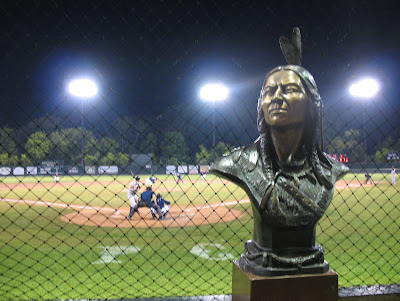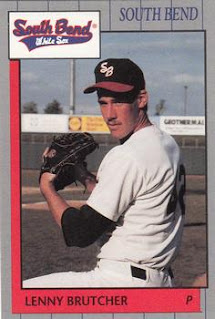Steve Carter worked as trainer in majors, with students
Detroit Tigers assistant athletic trainer Steve Carter described the hallmarks of an athletic trainer to The Athletic Edge.
"When you hear 'athletic trainer,' you think of working at a gymnasium throwing weights around," Tigers assistant athletic trainer Steve Carter told the site in the late 2000s. "Athletic trainers treat, evaluate, rehab and prevent injuries. Exercise is 25 percent of our job."
By that point, Carter had been a trainer with the Tigers for the better part of two decades, first in the minors and then in the majors. He's since moved on to work as a trainer with school kids.
Carter's career started out of the University of Indiana and in high school.
His first training job came at Evansville Central High School as a teacher and trainer. He then served as an assistant trainer at the University of Evansville before joining the Tigers.
Carter started with the Tigers by 1989, at single-A Fayetteville. He returned there for 1990.
At Fayetteville in May 1990, Carter encountered the worst as a trainer, a player who suffered a heart attack on the field and died. Carter and a doctor administered CPR to Gastonia's Ronaldo Romero before Romero was taken to the hospital, but Romero died on arrival, The Associated Press wrote.
"We started CPR right away," Carter told The AP. "As far as why it happened, nobody knows. They said he came off the mound and came in holding his chest and hyperventilating and collapsed."
Carter moved to high-A Lakeland for 1991. By 1994, he was in Detroit, as an assistant trainer for the Tigers.
He stayed in his role with the Tigers for 19 seasons, helping the Tigers to the 2006 World Series. One ALCS game had a chilly game-time temperature of 42 degrees and he explained to The Detroit Free Press his concerns, especially for outfielders when they make sudden movements.
"They stand around and then boom, they take off," Carter told The Free Press. "That's not the best thing for muscles."
Carter left the Tigers in 2013 to move to youth training. He landed at Cranbrook Schools in Michigan as a trainer there.
He worked on anything from knee injuries to concussion and lower level injuries and prevention, according to Michigan-based Downtown Publications.
"I do a lot of strengthening and conditioning with students," Carter told Downtown Publications. "Besides concussions, my time is spent on knees, ankles and backs. We also spend a lot of time with JV athletes, teaching them conditioning, and young female athletes, who often don't have the neck strength large males do."
- South Florida Sun Sentinel, Associated Press, May 16, 1990: Heart attack kills Class A pitcher
- The Athletic Edge: 2000s: Clearing up the term 'athletic trainer'
- Detroit Free Press, Oct. 14, 2006: Skippers won't sweat chill factor
- Downtown Publications, Feb. 1, 2016: Protecting student athletes
Made the Majors:1,411-32.2-X
Never Made Majors:2,969-67.8%
More 1990 Minor Leaguers:
- Hector Carrasco hoped to close, then made 12 ML seasons, 3/11/17
- Amalio Carreno threw forkball, took it to bigs for 3 games, 9/25/14
- Donnie Carroll missed college, signed pro, saw 5 seasons, 5/23/19
- Kevin Carroll had baseball background, played 5 seasons, 6/28/18
.jpg)







